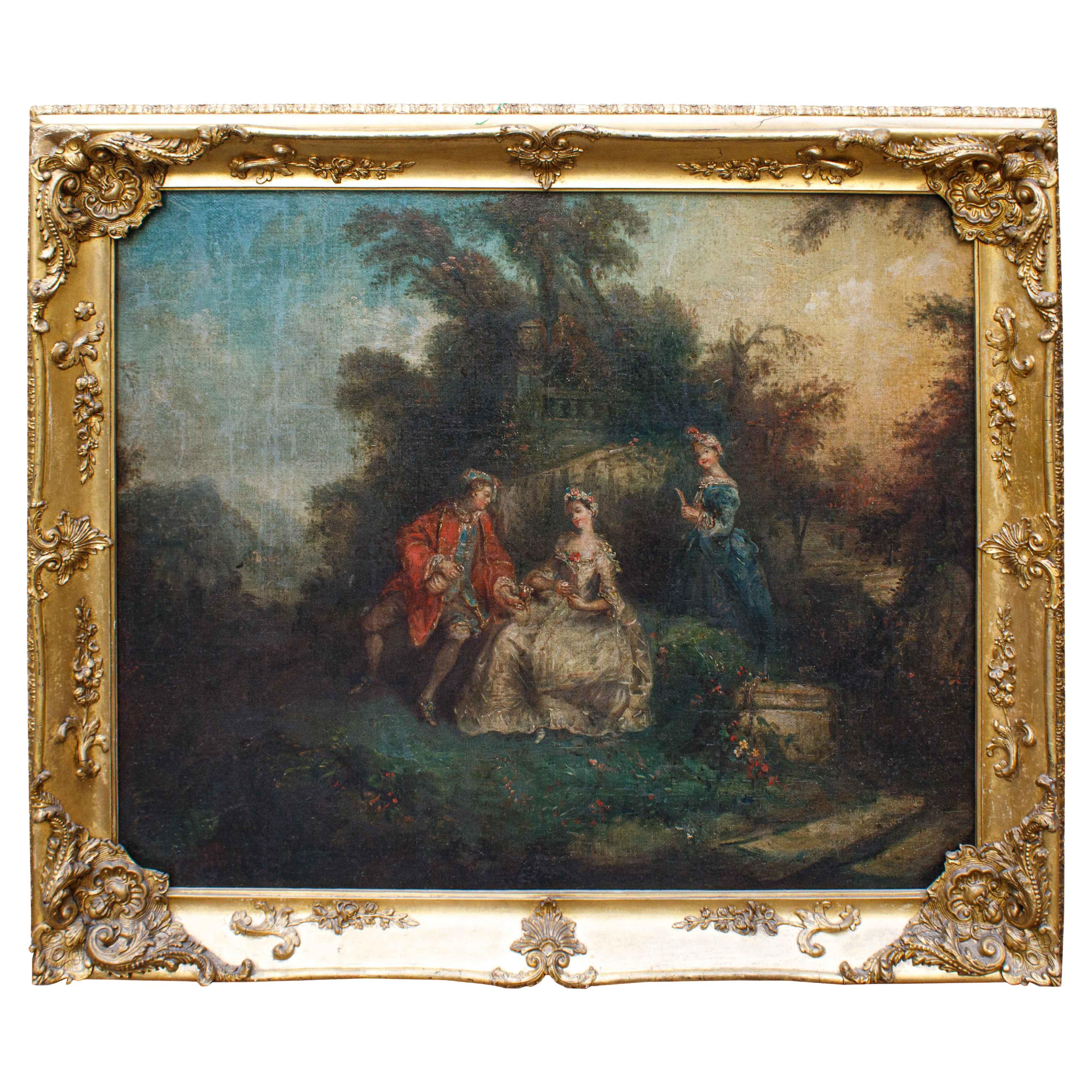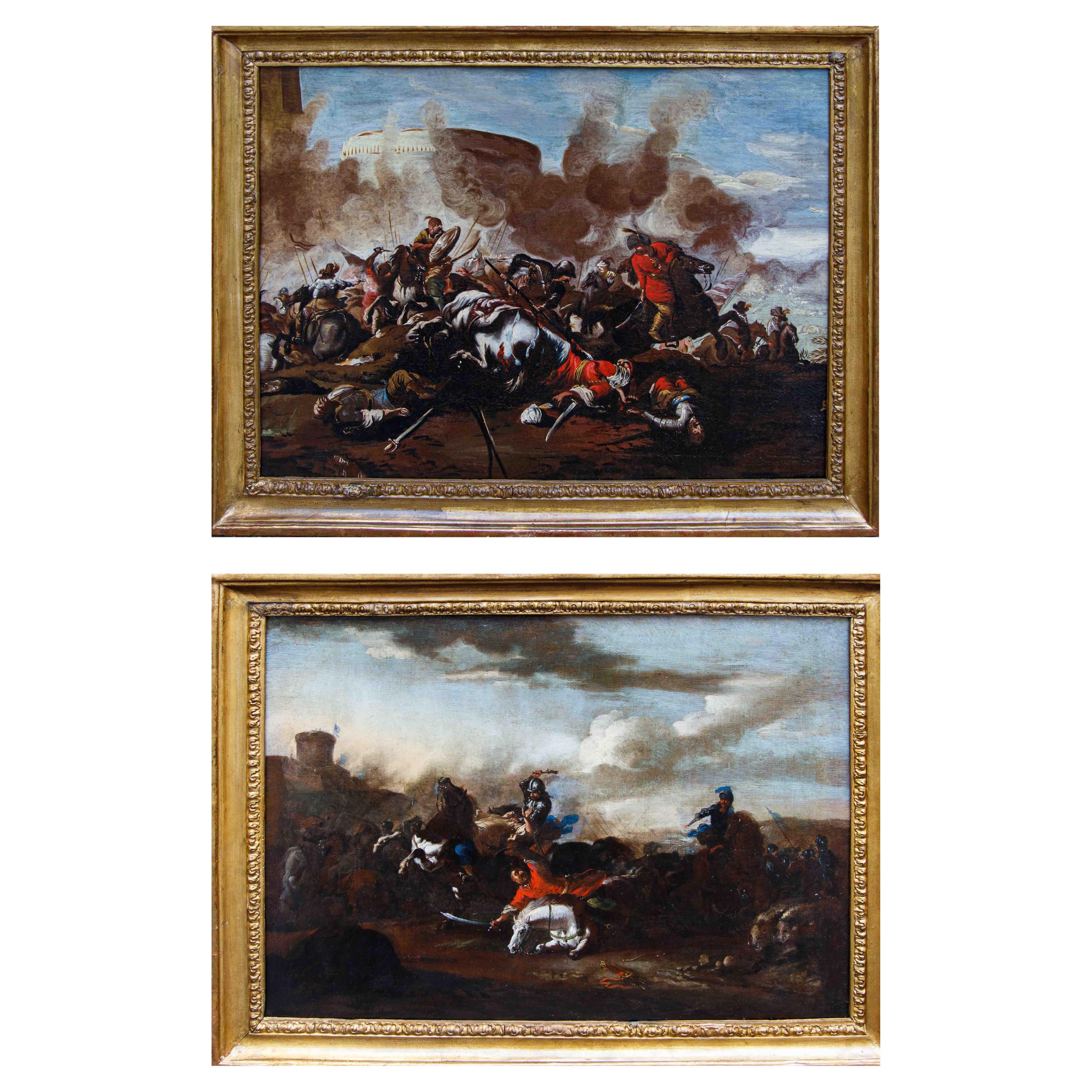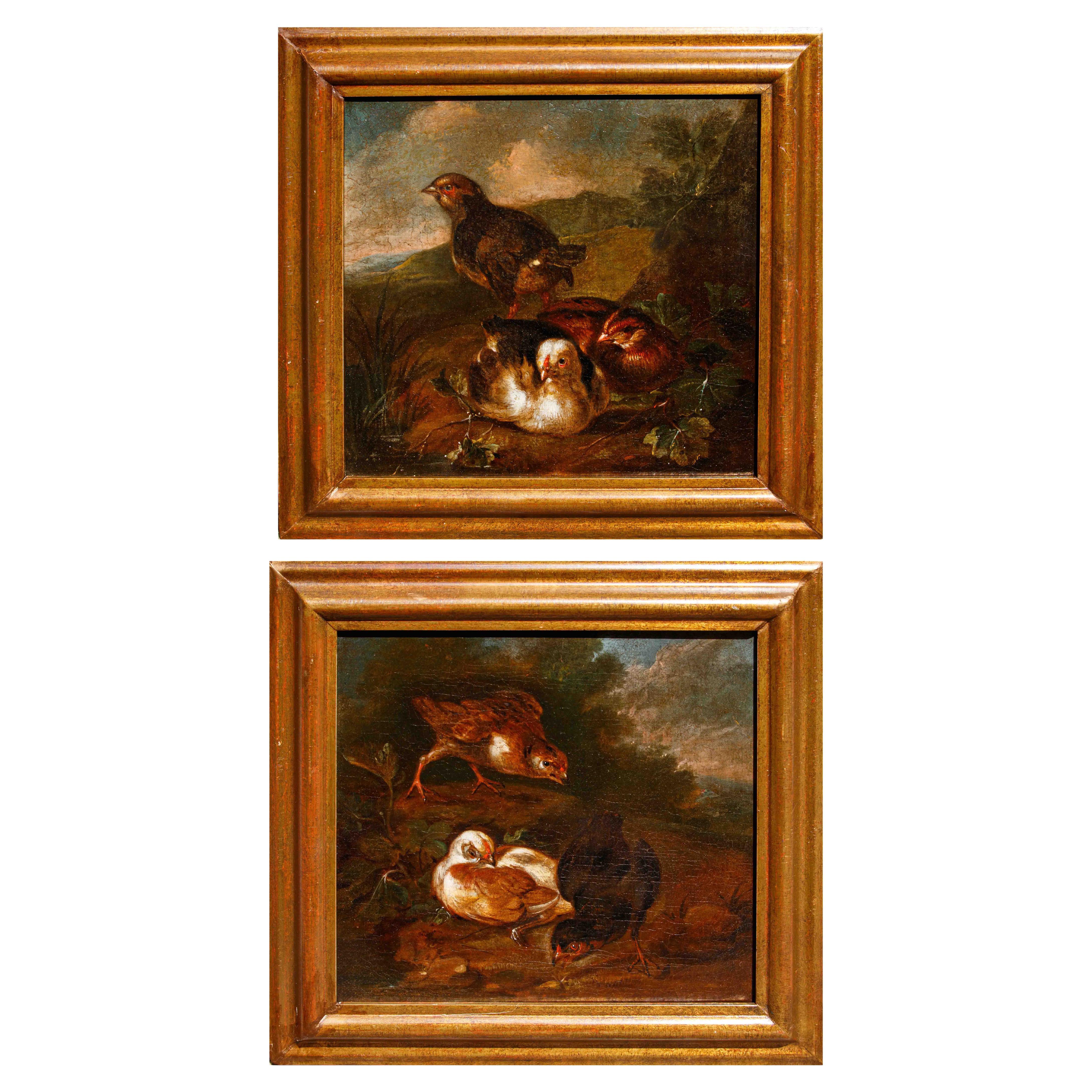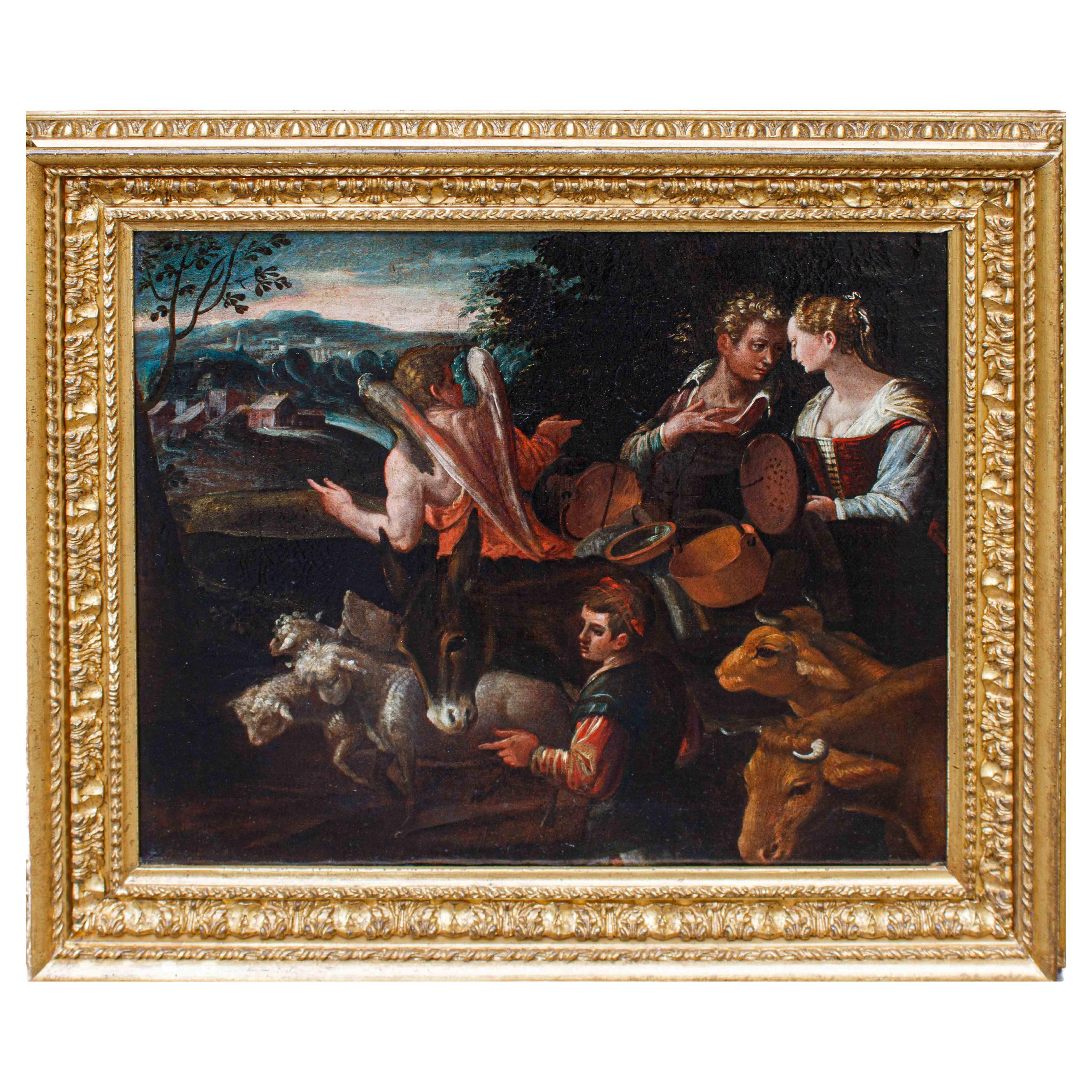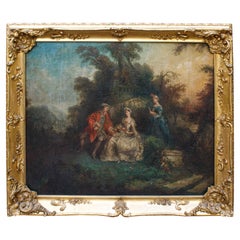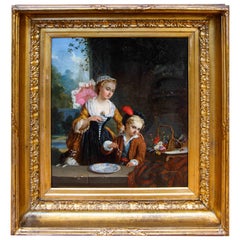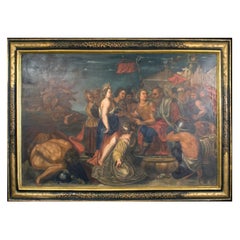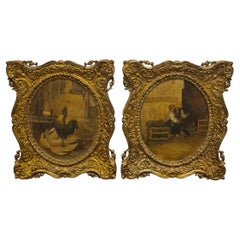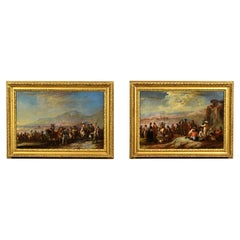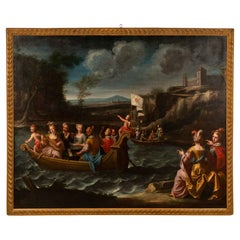Items Similar to 18th century, French School, Gallant scenes
Want more images or videos?
Request additional images or videos from the seller
1 of 16
18th century, French School, Gallant scenes
$5,433.40
£4,082.40
€4,600
CA$7,481.85
A$8,373.57
CHF 4,383.26
MX$101,723.65
NOK 55,656.30
SEK 52,521.23
DKK 35,010.58
About the Item
18th century, French School
Gallant Scenes
(2) Oil on panel, 24 x 19 cm
Framed, 44 x 36 cm
This pair of works attributable to the artistic context of the French eighteenth century celebrates the theme of courtly love and sensual pleasure typical of Rococo painting: in fact, two courtship scenes are depicted that closely follow the parameters of the rituals of ancient courts. The festive and fun atmosphere that transpires from the two canvases perfectly reflects the carefree and refined lifestyle of the aristocracy gravitating around the major European courts in the 18th century. Attention to detail, such as precious fabrics, jewelry, and extremely fine ornaments, emphasizes the luxury and refinement of court life, in keeping with the taste and aesthetics of French Rococo. The two works in question fall squarely within the purely eighteenth-century pictorial genre of the gallant scene. This current was radically opposed to the 'imposing and solemn classicism of the previous century, and was intended to communicate an unquestionable sense of voluptuousness, frivolity and inescapable decadence, in a kind of lost paradise. By this time the nobility, deprived almost completely of the power that belonged to them firmly until the seventeenth century, with its lavish parties tried in vain to demonstrate its apparent wealth in these paintings, the voice of the spirit of the age. This current of painting, which, around the middle of the century enjoyed immense fortune, was swept away by the events that followed the French Revolution. In these two small gallant scenes the influence of the activities of the key figures of eighteenth-century art in France, Watteau and Boucher, is strongly felt. Jean-Antoine Watteau was one of the initiators of the Rococo style on French soil, with his scenes of gallant parties and his marvelous bucolic landscapes populated by mythical characters or courtly audiences who madly love life and its pleasures. Influenced by Rubens and the early 18th-century works of the burgeoning Venetian school, with particular reference to Tiepolesque production, the French artist favored the use of a colorful, expressive, and vibrant palette, as well as the use of sharp, fast brushstrokes. Also close to Watteau's teachings was François Boucher, who was more devoted to the perfection of perspective, learned from the Baroque masters, and to the pursuit of a vivid colorism, borrowed from the models, perceived as absolutely illustrious, of Rubens and Correggio. The French artist's courtly and gallant scenes have a bucolic and pastoral air about them, which also seems to be perceptible in these two paintings, mirroring the French artistic climate of the second half of the 18th century.
- Dimensions:Height: 9.45 in (24 cm)Width: 7.49 in (19 cm)Depth: 1.97 in (5 cm)
- Style:Other (Of the Period)
- Materials and Techniques:Wood,Oiled
- Place of Origin:
- Period:
- Date of Manufacture:XVII Century
- Condition:Wear consistent with age and use.
- Seller Location:Milan, IT
- Reference Number:1stDibs: LU5918245122842
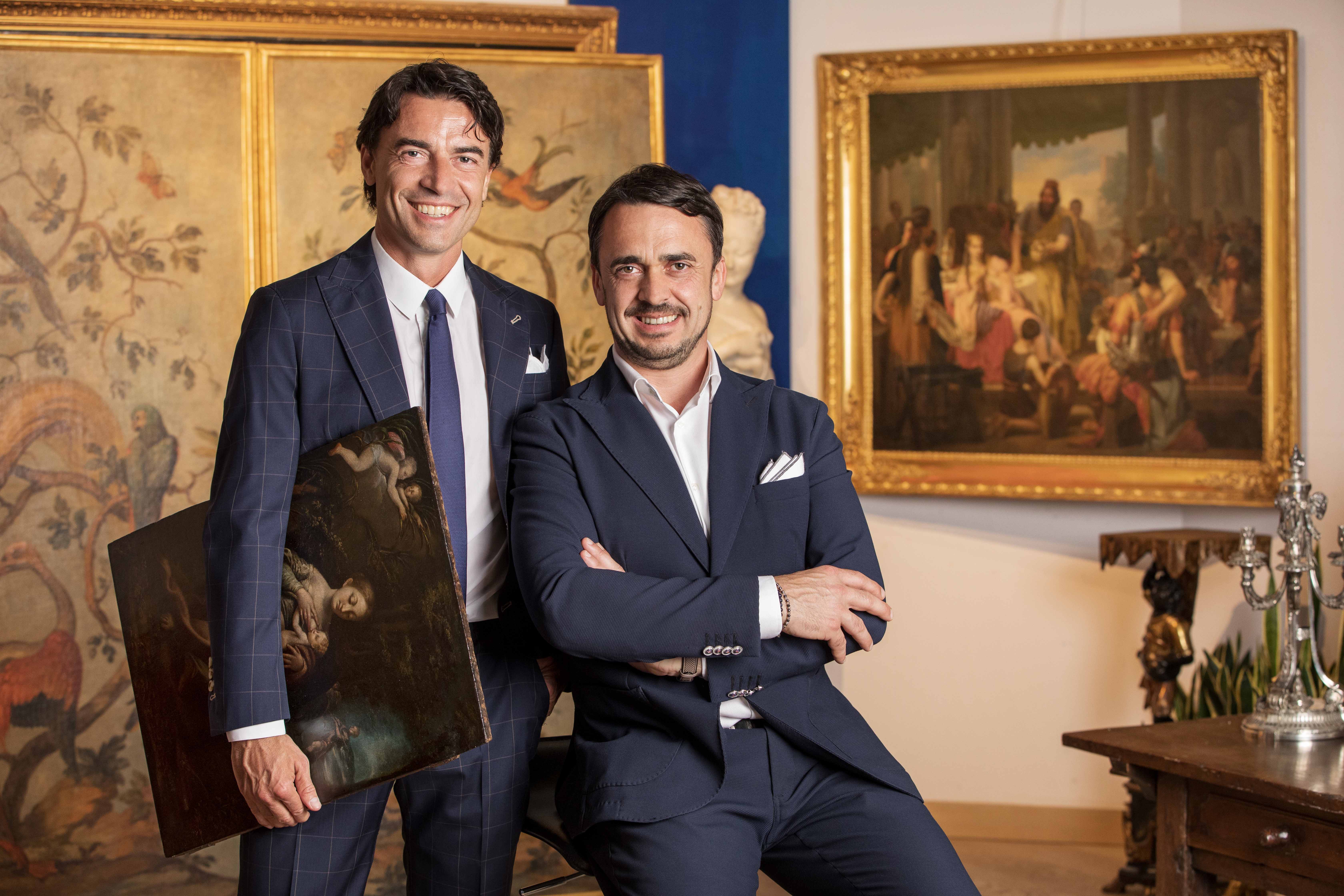
About the Seller
5.0
Vetted Professional Seller
Every seller passes strict standards for authenticity and reliability
Established in 2000
1stDibs seller since 2021
30 sales on 1stDibs
- ShippingRetrieving quote...Shipping from: Milan, Italy
- Return Policy
Authenticity Guarantee
In the unlikely event there’s an issue with an item’s authenticity, contact us within 1 year for a full refund. DetailsMoney-Back Guarantee
If your item is not as described, is damaged in transit, or does not arrive, contact us within 7 days for a full refund. Details24-Hour Cancellation
You have a 24-hour grace period in which to reconsider your purchase, with no questions asked.Vetted Professional Sellers
Our world-class sellers must adhere to strict standards for service and quality, maintaining the integrity of our listings.Price-Match Guarantee
If you find that a seller listed the same item for a lower price elsewhere, we’ll match it.Trusted Global Delivery
Our best-in-class carrier network provides specialized shipping options worldwide, including custom delivery.More From This Seller
View AllFrench School, 18th century, Garden with figures
Located in Milan, IT
French School, 18th century
Garden with figures
Oil on canvas, 40 x 53 cm
Framed, 59 x 72 cm
Category
Antique 18th Century and Earlier French Other Paintings
Materials
Canvas
18th-19th century, French school, the soap bubbles
Located in Milan, IT
French school, 18th-19th century
The soap bubbles
Oil on panel, 44.5 x 36.5 cm
Framed, 60 x 54 cm
In this French school painting, with its leery and playful tone, but mother lovi...
Category
Antique 19th Century Other Paintings
Materials
Canvas
17th century, Emilian school, Rural landscape with gallant scenes
Located in Milan, IT
17th century, Emilian school
Rural landscape with gallant scenes
Oil on canvas, 37 x 47.5 cm
Framed, 61 x 50.5 cm
The bucolic amenity of the present is reflected within the joyo...
Category
Antique 18th Century and Earlier Italian Other Paintings
Materials
Canvas
Neapolitan school, 17th century, battle scenes
Located in Milan, IT
Neapolitan School of the 17th Century
Battle scenes between Christians and Turks
(2) Oil on canvas, 52 x 71 cm
Framed, 61 x 80 cm
One genre that met with wide acclaim in seventeenth-century Neapolitan painting and flattering success among collectors was that of battle. The Parthenopean nobility loved to adorn the walls of their salons with battles depicting single acts of heroism or complex combats that exalted patriotism and warlike prowess, virtues with which members of the wealthy aristocracy of the time liked to identify.
The Church, in the Neapolitan area, was also at the forefront of commissions, commissioning artists to depict the spectacular triumphs of Christendom over the infidels, such as the memorable naval battle of Lepanto in 1571, which marked a historical turning point with the great victory over the Turks, becoming a repeated iconographic motif imbued with devotional value, replicated several times through the interest of the Dominican order, which was very devoted to Our Lady of the Rosary, who benevolently followed earthly events from above in heaven. Other themes dear to the Church within the genre were drawn from the Old and New Testaments, such as Constantine's Victory at the Milvian Bridge or St. James at the Battle of Clodius.
Among the leading Neapolitan artists of that period, several specialized in battle scenes: these include Francesco Graziani, known as Ciccio Napoletano, a battler active between Naples and Rome in the second half of the 17th century; Andrea De Lione, who lived in Naples from 1610 to 1685, a versatile narrator of battles without heroes, of horsemen assaulting or retreating, and of profane scenes immersed in a wild and primordial, yet already classicized, nature; and Carlo Coppola. The latter was active for more than twenty years, from 1640 to 1665, and his catalog, which is interesting because it bears witness to a particular historical moment and the tastes of private patrons, has yet to be defined, although many of his works are initialed. It is precisely to Coppola's corpus that these two paintings could come close: with the production of the Neapolitan battler the two paintings seem to share the smoky colors, the accentuated chiaroscuro and the marked dynamism of the scenes. Moreover, it is necessary to mention how that of the battle between Christians and Turks was an absolutely central theme in Coppola's pictorial production. Also close to the manner of the two paintings analyzed here is the production of one of Coppola's most celebrated pupils, Giovanni Luigi Rocco...
Category
Antique 17th Century Italian Other Paintings
Materials
Canvas
$9,213 / set
Emilian school, 18th century, Pair of live natures with birds
Located in Milan, IT
Emilian school, 18th century
Pair of live natures with birds
Oil on canvas, 28 x 30 cm
Framed, 37 x 38.5 cm
The northern Italian school of painting developed, as early as the 16t...
Category
Antique 18th Century and Earlier Italian Other Paintings
Materials
Canvas
Venetian school, Tobias and Sara in Nineveh, oil on canvas, 16th century
Located in Milan, IT
Venetian School, second half of the 16th century
Tobiah and Sarah led to Nineveh by the archangel Azariah
Oil on canvas, 48 x 56 cm - Framed, 58 x 72 cm
The present canvas, made w...
Category
Antique 16th Century Paintings
Materials
Canvas
You May Also Like
Large historical painting 18th century, Italian school
Located in Cesena, FC
Large historical painting 18th century, Italian school
"Darius' mother pleading before Alexander after the battle of Issus."
Oil on canvas 210 x 290 cm
Painted with great strength...
Category
Antique Late 18th Century Italian Paintings
Materials
Canvas, Wood, Giltwood
Pair Paintings peasant life scenes late 19th century
Located in Torino, IT
Pair of paintings depicting scenes of peasant life.
Made in oil on panel these two oval-shaped paintings depict typical rural scenes with roosters and peasants.
Dated late 1800' wi...
Category
Antique Late 19th Century Italian Paintings
Materials
Wood, Paint
$926 Sale Price / set
20% Off
18th Century, Italian Pair of Oil on Canvas Paintings by Francesco Simonini
By SIMONINI
Located in IT
Francesco Simonini (Parma, 16 June 1686 - Parma, 1766)
“The rest of the soldiers” and “The march of soldiers”
oil on canvas
cm 40 x 58 and 40 x 60 ; frame: h 52,5 x W 70,5 x D 6 an...
Category
Antique Early 18th Century Italian Baroque Paintings
Materials
Canvas
$27,639 Sale Price
35% Off
Italian 18th Century Oil on Canvas from the Piedmont Region
Located in West Palm Beach, FL
A sensational and large scale Italian 18th century oil on canvas from the Piedmont region. The beautiful painting is set in its original polychrome frame which displays a lovely carv...
Category
Antique 18th Century Italian Paintings
Materials
Canvas, Wood
Two Fête Galante Scenes, French School, 19th Century
Located in Toronto, CA
Two exquisite Fête Galante scenes from France, painted in the early 19th century in Rococo style.
The first depicts various groups of figures as they gather in a park, with classica...
Category
Antique Early 19th Century French Rococo Paintings
Materials
Canvas, Giltwood, Paint
19th Century Italian Oil Painting in the Manner of Antonio Panini
Located in Hudson, NY
This fine old painting is a typical pastiche of the kind popular throughout Italy and the world in the 17th, 18th and 19th centuries. The most commonly associated artist who really m...
Category
Antique 19th Century Italian Baroque Revival Paintings
Materials
Canvas, Wood
